How to Structure An Environmental Impact Assessment Report
 Share
Share
 Copy Url
Copy Url
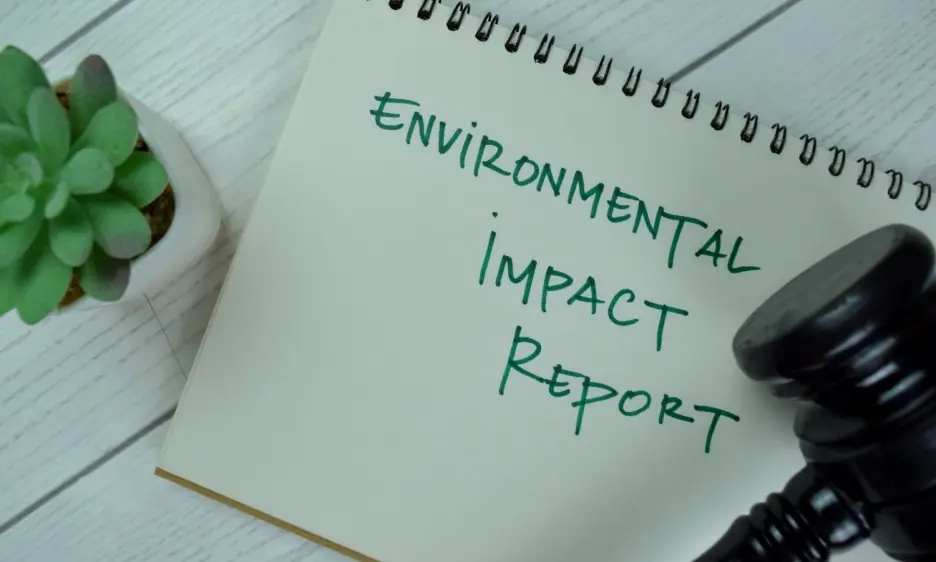
An Environmental Impact Assessment Report is also known as an EIA report. This report is essential for businesses, industries, and governments. It helps them assess a project's environmental effects before it begins. Companies started releasing these reports decades ago due to rising climate change and sustainability concerns. Today, they are key to environmental management. They ensure projects follow sustainable business practices while addressing environmental problems and issues.
A well-structured Environmental Impact Assessment Report goes beyond compliance. It helps stakeholders, regulatory bodies like the Ministry of Environment, and assessment agencies understand the project's impact on air, water, land, and communities. Clear, organized content ensures that data is presented and understood. Good design makes a report engaging, improving readability while helping businesses effectively communicate findings to environmental groups and decision-makers.
However, creating an informative and visually appealing report is not easy. A poorly formatted report on the impact of industries on the environment can confuse. It may lead to misinterpretation or even non-compliance. This is where professional report design services come in. Expert design enhances structure, integrates visuals like graphs and infographics, and ensures the document meets regulatory standards.
This article covers everything about designing an effective Environmental Impact Assessment Report. It explores its purpose, key components, and how design improves clarity. It also discusses common challenges in report creation and the importance of professional formatting. Whether creating an EIA report for the first time or improving an existing one, this guide will help. It ensures your report is clear, structured, and impactful.
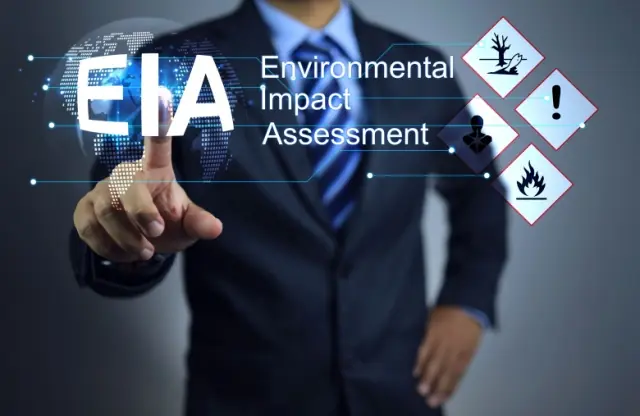
The Purpose of an Environmental Impact Assessment Report
An Environmental Impact Assessment (EIA) Report helps evaluate how a project might affect the environment before it begins. It examines environmental and social impacts, ensuring developments follow sustainability reporting standards and support environmental protection.
Core Purpose of an EIA Report
The main goal of an EIA Report is to identify and assess potential environmental impacts before approval. These include both direct and indirect emissions. This proactive approach helps developers and authorities foresee risks and take steps to prevent or reduce negative effects. The EIA process supports informed decision-making, balancing development needs with environmental sustainability.
Legal and Regulatory Framework Governing EIAs
EIAs follow legal and regulatory frameworks that ensure thorough environmental assessment and compliance.
- The Task Force on Climate-Related Financial Disclosures (TCFD): The TCFD provides guidelines for companies to disclose climate-related risks and promote transparency in environmental reporting frameworks.
- Carbon Disclosure Project (CDP): The CDP encourages organizations to measure and report their environmental impacts. It helps manage direct and indirect emissions.
- Environmental Laws: National and regional laws mandate EIAs for projects that impact the environment. These laws ensure compliance with environmental protection standards.
These frameworks guide the EIA process, ensuring projects meet environmental criteria and contribute to sustainability goals.
Ensuring Clarity Through Well-Designed Reports
A well-designed EIA Report improves communication for decision-makers, stakeholders, and regulators. Clear EIA report design makes complex data easy to understand. It also helps with the identification and assessment of impacts. This clarity speeds up approvals and ensures all parties can make informed contributions.
Aligning Reports with Environmental Policies and Sustainability Goals
Structuring an EIA Report to match environmental policies and sustainability goals is essential. This alignment proves a project’s commitment to environmental sustainability and sustainable business practices. A well-structured report ensures compliance while reflecting a project's dedication to responsible development and environmental stewardship.
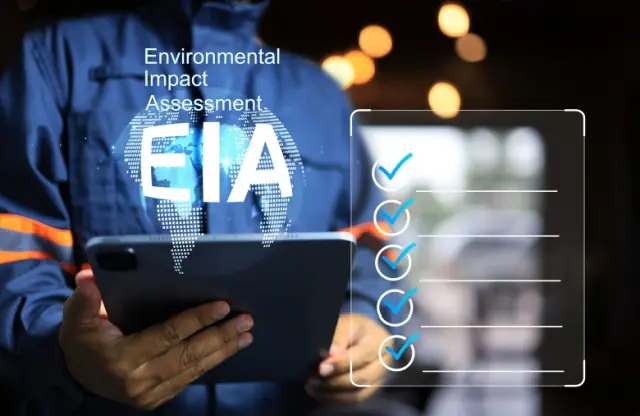
Key Components of an Environmental Impact Assessment Report
An Environmental Impact Assessment (EIA) Report evaluates how a project might affect the environment before it begins. It examines environmental and social impacts. It ensures developments follow sustainability reporting standards and support environmental protection.
1. Executive Summary
This section gives a brief overview of the report’s findings. It highlights significant environmental impacts and suggested mitigation measures. It also summarises key recommendations. This helps stakeholders quickly understand a project's effects and the strategies to address them.
2. Project Description
This part explains the project's objectives, location, and scale. It includes details on the purpose, design, and operations. Maps and diagrams may be used to show the geographical context. This section helps readers understand the project's scope and environmental setting.
3. Baseline Environmental Conditions
This section presents data on the existing environmental state before the project begins. It includes information on air and water quality, soil characteristics, biodiversity, and socio-economic conditions. Understanding these conditions is important for assessing potential impacts.
4. Impact Assessment and Mitigation Measures
This part analyses potential environmental effects, including direct and indirect emissions. It identifies significant environmental impacts and outlines strategies to reduce them. An environmental management plan is included. It details specific actions, timelines, and responsibilities for implementing mitigation measures.
5. Stakeholder Engagement and Public Consultation
This section explains how feedback is gathered from stakeholders and the public. It details the consultation methods used and summarizes key concerns. It also shows how this input influenced project planning. Engaging stakeholders improves transparency and builds community support.
6. Conclusion and Recommendations
The final section summarizes the assessment’s key findings. It outlines actions to ensure environmental compliance. It also provides recommendations for implementation, monitoring, and follow-up activities. This section helps decision-makers evaluate the project's sustainability.
Enhancing Clarity with Structured Formatting
A well-structured report improves the presentation of environmental information. Using charts, graphs, and infographics makes complex data easy to understand. These visual tools help communicate significant environmental impacts. A well-organized report ensures effective impact reporting. It also helps stakeholders and regulatory authorities make informed decisions.
Regulatory Oversight in India
In India, the Ministry of Environment, Forest and Climate Change (MoEFCC) is the agency that monitors environmental impact assessment. The MoEFCC provides guidelines to ensure compliance with environmental laws. It ensures that projects follow national standards and promote environmental sustainability.
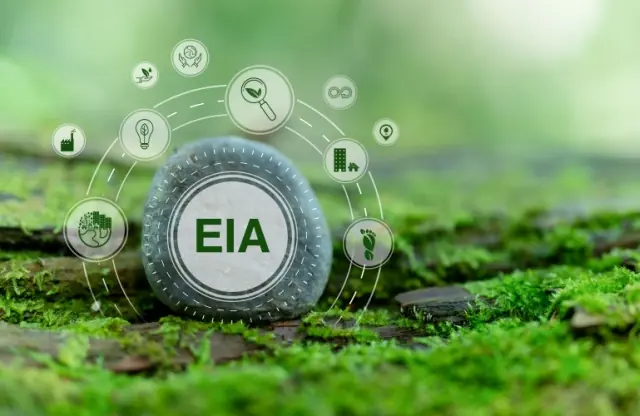
The Role of Design in Enhancing an Environmental Impact Assessment Report
Design is key in making an Environmental Impact Assessment (EIA) Report clear and engaging. A well-designed report simplifies complex technical details. It turns them into easy-to-understand information, helping stakeholders make informed decisions.
Making Technical Content Accessible
Effective impact report design simplifies complex environmental data. It makes information clear and easy to access for a broad audience. This helps stakeholders understand significant environmental impacts. With better clarity, they can make informed decisions about the project.
Enhancing Readability with Design Elements
Typography, spacing, and layout improve report readability. Clear headings, consistent fonts, and white space help readers navigate the document. This ensures key points in the environmental management plan and risk assessment stand out. Well-structured content makes the report easier to read and absorb.
Ensuring Professionalism and Compliance
Branding, templates, and regulatory formatting add professionalism to EIA reports. These elements enhance credibility and ensure compliance with guidelines from the Government of India. A well-structured report on the impact of industries on the environment reflects transparency and responsibility.
Simplifying Data with Visuals
Visuals such as maps, tables, and flowcharts make environmental information clearer. These tools show data trends and relationships effectively. They help explain significant environmental impacts and planned mitigation measures.
Engaging Stakeholders with Interactive Digital Reports
Interactive digital reports improve stakeholder engagement. Clickable maps and expandable sections allow users to explore key data. These features help stakeholders understand environmental implications more easily.
Final Thoughts
A well-designed EIA Report is clear, professional, and engaging. Good design improves accessibility, readability, compliance, and interactivity. It ensures all stakeholders can easily interpret the findings.
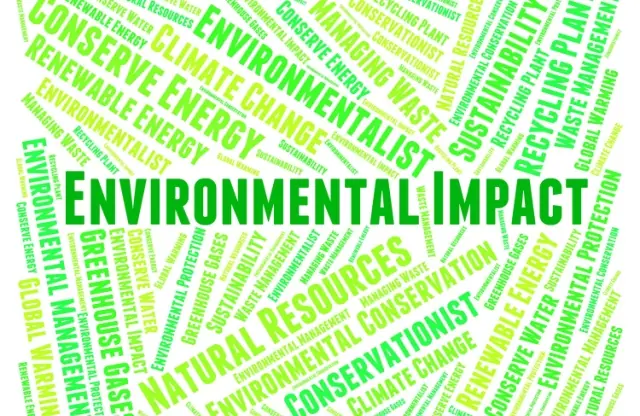
Common Challenges in EIA Report Design and How to Overcome Them
Designing an Environmental Impact Assessment (EIA) Report involves several challenges. Professional design services can help overcome these obstacles, ensuring the report is clear, compliant, and engaging.
Information Overload
EIA reports often contain extensive data, which can overwhelm readers. Professional designers structure this content effectively, using clear headings, bullet points, and concise summaries. This approach makes complex information more digestible, enhancing reader comprehension.
Technical Jargon
The use of specialized terminology can alienate non-expert stakeholders. Design experts collaborate with environmental professionals to translate complex terms into plain language. They also incorporate glossaries and explanatory notes, making the report accessible to a broader audience.
Regulatory Compliance
Ensuring that an EIA report meets all national and international guidelines is crucial. Professional design teams stay updated on current regulations and integrate these requirements into the report's format and content. This diligence helps prevent potential legal issues and project delays.
Visual Clarity
Presenting data visually enhances understanding but must be done thoughtfully. Designers use color coding, icons, and structured layouts to highlight key information. Effective data visualization, such as clear charts and graphs, conveys complex environmental metrics succinctly.
Consistency in Design
A cohesive design ensures that all sections of the report align seamlessly. Professional designers maintain uniformity in fonts, colors, and layout throughout the document. This consistency enhances the report's professionalism and aids in reader navigation.
By addressing these challenges, expert design services transform EIA reports into polished, user-friendly documents that effectively communicate essential environmental information.

Why Choose Professional Report Design Services for Your EIA Report?
Creating an Environmental Impact Assessment (EIA) Report demands precision and clarity. Engaging professional report design services can enhance the report's effectiveness and ensure it meets all necessary standards.
Expertise in Structuring Complex Reports
Professional designers excel at organizing intricate information. They ensure the report flows logically, making it easier for readers to follow. Their knowledge of regulatory requirements guarantees that the report complies with both national and international guidelines.
High-Quality Visuals & Data Representation
Transforming raw data into clear visuals is crucial for reader comprehension. Experts create engaging charts, infographics, and maps that convey complex environmental data effectively. This approach enhances understanding of key findings and supports informed decision-making.
Time Efficiency & Accuracy
Outsourcing report design allows your team to focus on core activities. Professional designers work efficiently to produce accurate, high-quality reports within set deadlines. This partnership reduces internal workload and ensures timely submissions.
Custom Branding & Professional Aesthetics
Maintaining your organization's identity is vital. Design professionals incorporate custom branding elements, ensuring the report reflects your corporate image. A polished, professional appearance enhances credibility with stakeholders.
Digital & Print-Ready Formats
Versatility in report formats is essential for distribution. Designers deliver reports optimized for digital platforms and print, ensuring accessibility and ease of sharing. This flexibility meets diverse stakeholder needs. For example, many companies have switched to releasing digital annual reports rather than traditional ones.
Partnering with a professional design team ensures your EIA report is clear, compliant, and compelling. Consult expert report designers today to create high-impact, regulatory-compliant EIA reports that effectively communicate your project's environmental considerations.

Get Clear, Compliant, and Engaging EIA Report Design with Report Yak
A well-designed Environmental Impact Assessment (EIA) Report is more than a regulatory requirement. It is a key tool for informed decision-making and responsible project execution. A clear, structured, and visually engaging report builds credibility. It makes complex environmental data easy for stakeholders, regulatory bodies, and the public, to understand.
An EIA report must be well-organized and easy to interpret. It outlines key environmental impacts and suggests mitigation measures. Effective report design transforms technical content into an engaging and compliant document. Structured layouts, typography, and data visualization like ESG metrics improve readability. A strong design also reinforces ethical business practices.
Outsourcing report design ensures compliance, accuracy, and clarity. A professional design team adds expertise in branding, formatting, and impact reporting. They create regulatory-compliant and visually appealing reports. At Report Yak, we specialize in EIA reports, annual reports, and ESG and sustainability design. We have worked with global clients across industries to craft impactful reports.
Explore our LACP Spotlight award-winning ESG, sustainability, and annual reports on our Showcase. Learn more about our services on our Services page. Need help? Call 1800 121 5955 (India), WhatsApp us, or email contact@reportyak.com. Prefer online? Fill out our Contact form. Let’s design reports that drive impact!
Related Posts
-
How To Adopt BRSR Guidelines For Success
Oct 15, 2025Share
Copy Url
Simplifying ESG Disclosure for Better Impact
corporate reportingenvironmental and social initiatives
+6
Aug 28, 2025Share
Copy Url
GRI Sustainability Taxonomy: Learn How to Turn Data Into Advantage
corporate governancecorporate reporting
+11
Jul 1, 2025Share
Copy Url


